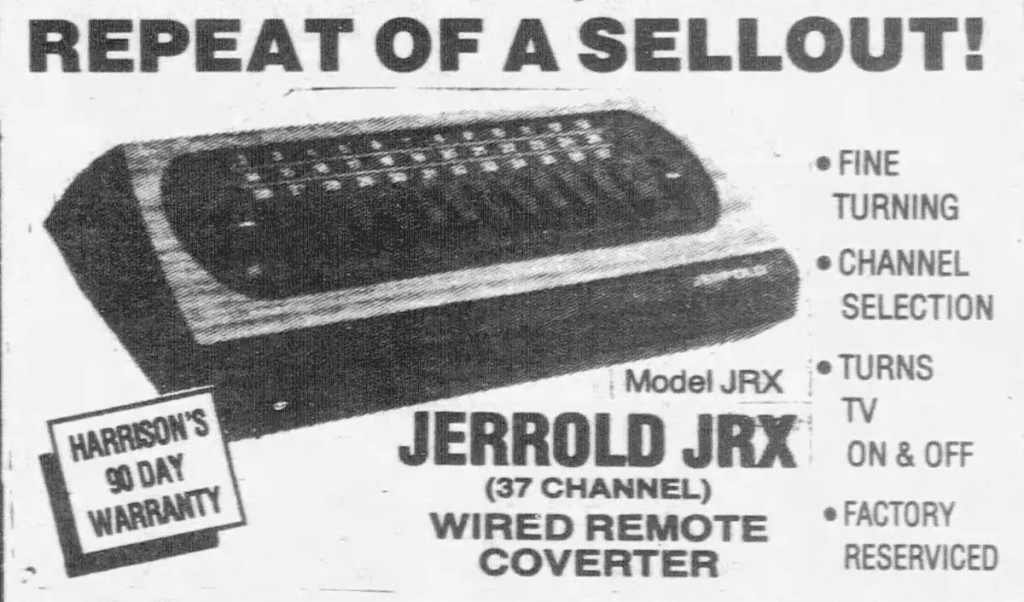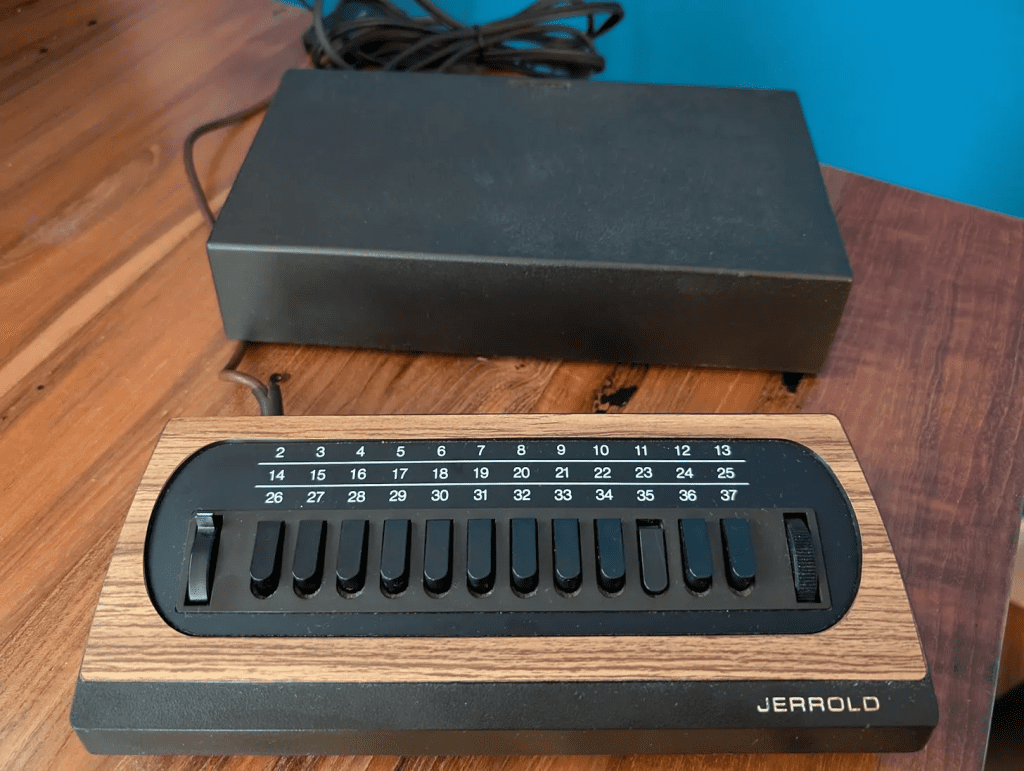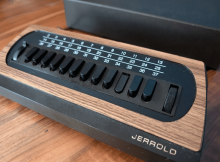From the 1950s to the early 2000s, Jerrold cable TV boxes changed how Americans watched television. Long before streaming services took over, Jerrold boxes brought countless hours of cable entertainment into homes. While the hardware might seem outdated today, it laid the foundation for modern TV viewing. This article explores how Jerrold boxes shaped the cable industry, how they evolved, and why they hold a special place in the hearts of many who remember the early days of cable TV.

The Early Days of Cable TV and Jerrold’s Role
In the early days of television, reception was often limited by distance and geography. Viewers in remote or mountainous areas struggled to receive TV signals through traditional antennas. That’s when Jerrold Electronics Corporation, founded by Milton Shapp in 1950, came into play. Shapp’s innovative solution involved placing shared antennas on high ground to capture signals, which were then distributed to homes via coaxial cables.
This approach, known as Community Antenna Television (CATV), marked the birth of cable TV. Jerrold not only pioneered this system but also provided the necessary equipment, including amplifiers, converters, and set-top boxes. Their technology allowed rural areas to enjoy better TV reception, paving the way for cable to expand to suburban and urban regions.
Jerrold JRX-3: A Game-Changing Cable Box
One of Jerrold’s most iconic models was the JRX-3. This analog cable box, launched in the 1970s, could tune up to 36 channels. It was simple, with a straightforward interface that allowed users to select channels with a row-switching system and a fine-tuning dial. The box connected to the television through a coaxial cable and output to channel 3. For many families, including mine, this box represented a magical gateway to a wider variety of TV content.
Jerrold’s JRX-3 box was sturdy and efficient, often adorned with a sticker indicating corresponding channels. Despite its basic design compared to today’s streaming devices, it was an impressive piece of technology at the time. It democratized entertainment, offering families access to a broader range of shows and channels.
Jerrold’s Evolution: From Analog to Digital Boxes
As cable TV grew in popularity, Jerrold adapted its technology to meet new demands. Here’s a look at the evolution of Jerrold boxes through the years:
1. Analog Cable Boxes (1960s-1980s)
Jerrold’s early cable boxes were analog devices that converted cable signals into a format that televisions could display. These basic boxes allowed users to switch between a limited number of channels, enabling viewers to explore new TV programs beyond traditional broadcast channels. For many, this marked the first step toward expanding TV entertainment.
2. Addressable Boxes (1980s-1990s)
With the rise of premium channels like HBO and the emergence of pay-per-view services, Jerrold developed addressable boxes. These boxes could be controlled remotely by cable providers to grant or deny access to specific channels based on a user’s subscription. Each box had a unique address, making it possible for providers to offer a customized TV experience.

This was a major advancement, allowing subscribers to add or remove channels without a technician visiting their homes. It also enabled the introduction of scrambled channels, paving the way for subscription-based services that charged for exclusive content.
3. Converter/De-Scrambler Boxes (1980s-1990s)
As cable companies began to scramble premium channels to protect their content, Jerrold created converter boxes that could unscramble signals for subscribers. These boxes became essential for accessing premium content. However, they also sparked a black-market industry, with modified Jerrold boxes being sold to bypass subscriptions and gain free access to premium channels.
4. Digital Set-Top Boxes (1990s-2000s)

Jerrold, under General Instrument, transitioned to digital set-top boxes as the industry evolved. These digital boxes offered better picture quality, more channels, and features like Video-On-Demand (VOD) and interactive program guides. They enabled two-way communication between users and cable providers, marking a significant leap in cable technology.
The Impact of Jerrold on Cable TV
Jerrold’s innovative equipment and technology were crucial in making cable TV a household staple. The company’s influence spanned several decades, transforming television from a limited broadcast service into a customizable entertainment experience. Here are some key impacts of Jerrold’s contributions:
1. Revolutionizing Access to Television
Jerrold’s technology brought television to areas that previously had limited or no access. By offering a more reliable signal and a wider range of channels, Jerrold democratized TV entertainment, making it accessible to more households.
2. Pioneering Subscription-Based TV
Jerrold’s addressable boxes laid the groundwork for subscription-based TV. By enabling remote control of channels, Jerrold allowed cable providers to offer a la carte channel selection, premium channels, and pay-per-view services. This model became the basis for today’s subscription services, from cable packages to streaming platforms.

3. Boosting Cable Infrastructure
Jerrold wasn’t just about set-top boxes; the company also provided the infrastructure that supported cable TV. From amplifiers to head-end equipment that processed TV signals, Jerrold played a critical role in building the backbone of cable networks across the United States.
The Decline of Jerrold and the Rise of New Technologies
Despite its massive success, Jerrold eventually faced competition from newer technologies. As satellite TV, fiber optics, and internet-based streaming gained traction in the 2000s, traditional cable boxes became less relevant. General Instrument, which had acquired Jerrold, was absorbed by Motorola in 2000. Motorola continued to develop cable technology but eventually sold its set-top box division to Google in 2012.
While the Jerrold brand no longer exists, its innovations have left a lasting impact. Many of the principles behind Jerrold’s equipment—like signal conversion, channel scrambling, and digital decoding—are still used in modern cable and internet services today.
Nostalgia for Jerrold Cable Boxes
For those who grew up with Jerrold cable boxes, there’s a sense of nostalgia attached to these devices. They represent an era when watching TV was simpler but still incredibly exciting. The sound of a match being struck, the slight click of a button, and the anticipation of seeing a new channel—these are memories tied to a time when television felt like magic.
Many of these old Jerrold boxes can still be found online, often sold as vintage collectibles. Owning one serves as a reminder of how far television technology has come and the role Jerrold played in that journey.
Conclusion: Jerrold’s Lasting Legacy in Home Entertainment
Jerrold Electronics Corporation may no longer be around, but its impact on the cable TV industry is undeniable. From pioneering community TV access to developing addressable boxes that transformed home entertainment, Jerrold helped shape how millions of Americans experienced television. The company’s legacy lives on in the infrastructure that continues to support cable services today.
Jerrold’s story is one of innovation, adaptation, and transformation—an essential chapter in the evolution of home entertainment. It reminds us of a time when a simple box could open up a world of possibilities, changing the way we watched TV forever.

